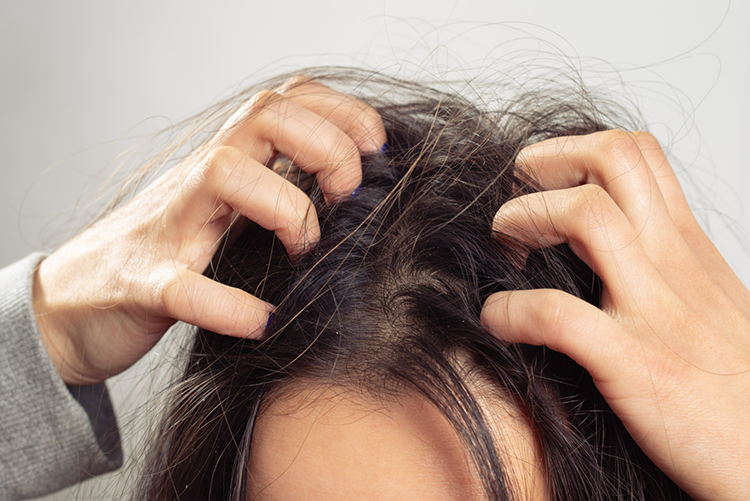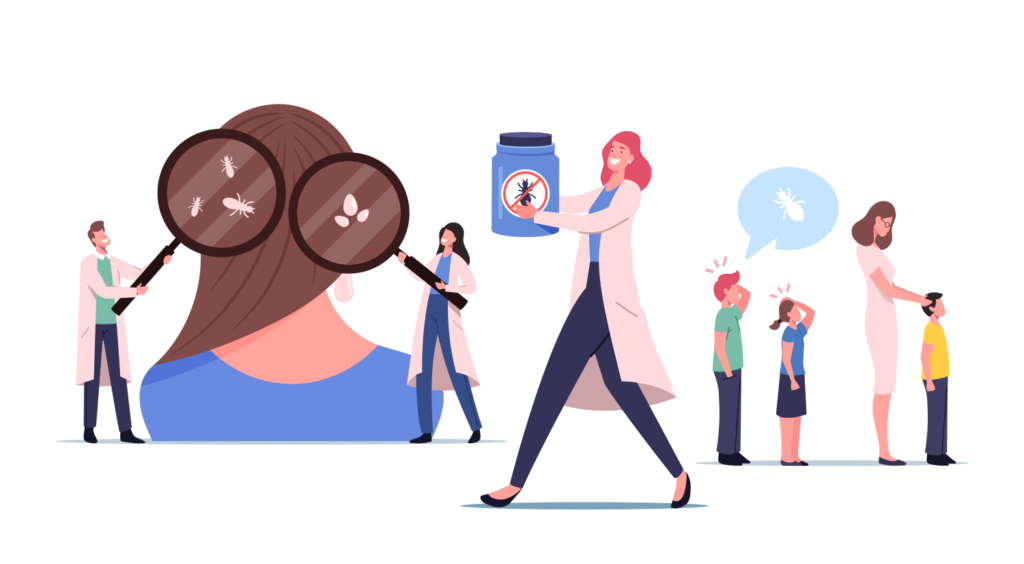Head lice check!
No chemicals, pesticides or toxins.

OUR HEAD LICE CHECK!
Our process for lice checks includes dampening the hair, using a detangler, and carefully inspecting the hair using a TERMINATOR lice comb. And if we discover head lice on your Childs hair, we show you and you decide if want to get treat it by us.
Ones that you get treat it in Linda’s Lice Out, we recommend to check all family member who live in the same house, and dual household, we recommend to check care givers, grandma, grandpa, etc.
Only those who get check by us and treat it if need it, will get the 30 days guarantee. NO EXETIONS.
Our price for a lice check is $30.00 dollars
If you get treatment, the check fee is void it.

What Are the Signs & Symptoms of Head Lice?
Even though they’re tiny, you can see head lice. Here’s what to look for:
- Lice eggs (nits). These look like tiny yellow, tan, or brown dots before they hatch. Lice lay nits on hair shafts close to the scalp, where the temperature is perfect for keeping warm until they hatch. Nits look a bit like dandruff, but aren’t removed by brushing or shaking them off.
- Unless a child has many head lice, it’s more common to see nits in the hair than live lice crawling on the scalp. Lice eggs hatch approximately 7 to 10 days after they’re laid the eggs. After hatching, the remaining shell looks white or clear and stays attached to the hair shaft. This is when it’s easiest to spot them, as the hair is growing longer and the egg shell is moving away from the scalp.
- Adult lice and nymphs (baby lice). Adult lice are no bigger than a sesame seed and are grayish-white or tan. Nymphs are smaller and become adult lice about 1–2 weeks after they hatch. This life cycle repeats itself about every 3 weeks. Most lice feed on blood several times a day, and they can survive up to 2 days off the scalp.
- Scratching. With lice bites come itching and scratching. This is due to a reaction to the saliva (spit) of lice. But the itching doesn’t always start right away. It depends on how sensitive a child’s skin is to the lice. It might take weeks for kids with lice to start scratching. They may complain, though, of things tickling or moving around on their heads.
- Small red bumps or sores from scratching. Some kids have mild irritation from scratching, while others may get a bothersome rash. Scratching a lot can lead to a bacterial infection. Watch for swollen lymph nodes (glands) on the back or front of the neck, and red, tender skin that might have crusting and oozing.
How Can I Check My Child for Head Lice?
It can be tough to find a nymph or adult louse. Usually, there aren’t many of them and they move fast. Look for nits attached to the hair near the scalp. They can look like dandruff or dirt. To tell them apart, pull on the little speck with your fingers — dandruff and dirt can be removed, but nits stay stuck. A magnifying glass and a bright light can help with your inspection.
Should hair be wet or dry when checking for lice?
The best way to check for head lice is to wet your child’s hair, apply detangler or conditioner, Use a bright light to spot the lice and with the terminator comb for lice removal. comb the hair out in very small sections, and look for lice or nits on the comb. You can wipe the comb onto a tissue or paper towel where it will be easier to see them.

